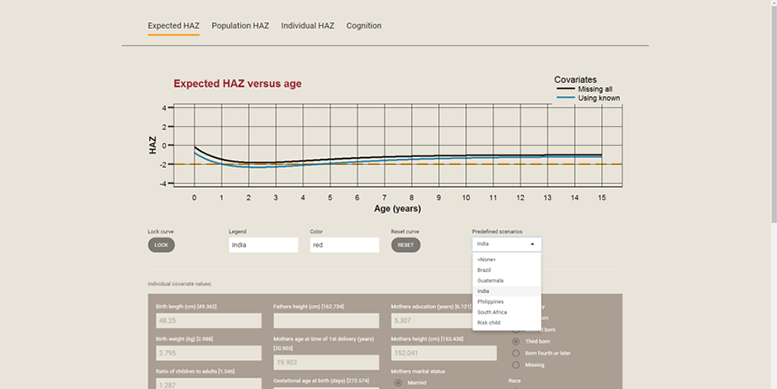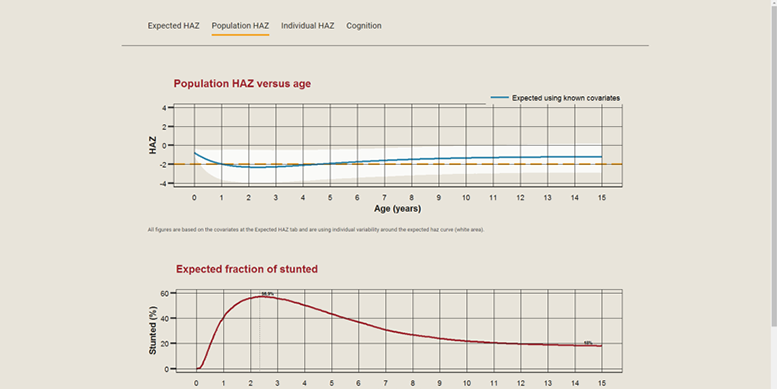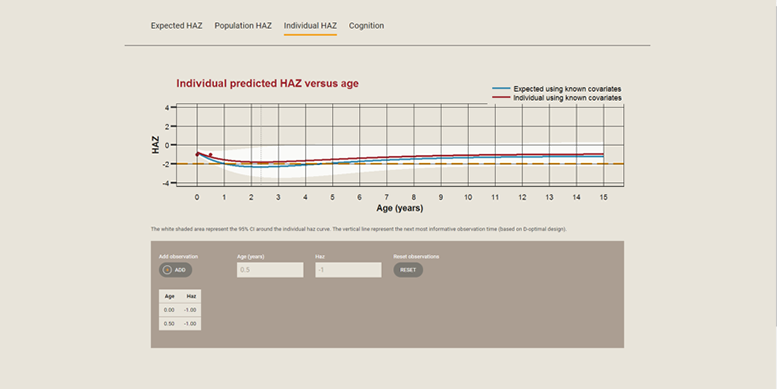The Challenge
A key challenge for Ki, the Foundation, and the global health community is to understand risk profiling and prevention in terms of: who is at greatest risk, what risk factors drive most of the burden, and when in the life cycle does a person have greatest risk. As a response to this challenge, the FREM model was developed to address these questions in terms of risk profiling and interventions, and to improve the efficiency of identifying: who will derive maximum benefit from intervention, what risk factors are most responsive to intervention, and when in the life cycle will targeted interventions be most effective. The FREM Explorer was developed with an easy-to-use and intuitive visualization to facilitate collaboration between data scientists and domain experts, and to improve understanding and use of this complex model.
Ki leveraged one of FREM’s strengths which accounts for missing measurements during the course of a longitudinal study. In neurocognitive studies of children with incomplete measurements, the team identified an unexpected result that poor sanitation was a major risk factor for worsened cognitive development.
Start Date
September 2016
Stage of Development
Always in Progress
Working Teams
HBGDki Members



